
Oculus—now Meta Quest—and its gaming cousins get all the buzz, but the potential scope of virtual reality (VR) is vast, with applications in entertainment, education, healthcare, training, and much more.
Can today’s developers learn important lessons from the history of VR?
USC Professor Scott Fisher and a team of graduate students at the Mobile and Environmental Media Lab in the USC School of Cinematic Arts think they can, and they’re using VR to document the early history of VR.
A lot has been written about the early development of VR, and Ivan Sutherland’s head-mounted display from the 1960s—now in CHM’s collection—is frequently mentioned. “It’s hard to say enough about the impact of Sutherland’s work,” says Fisher. “It’s astounding.”
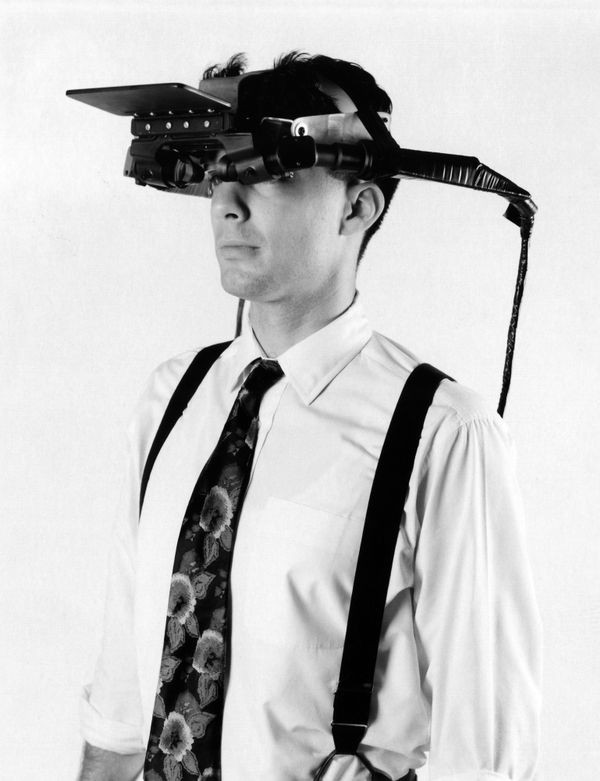
The head-mounted display from Sutherland’s Harvard project. Computer History Museum, catalog number 102680042.
Nathan Fairchild, a graduate student and key member of the research team, explains that you usually get “a page of text that kind of described what was going on. VR is the furthest away from lines of text on a page, and yet that’s all we’ve had for those who are interested in delving into it, understanding it, and experiencing it.”
So the team asked, “What if we could actually visit those early labs virtually, learn more about these pioneering efforts, and experience what these prototypes were really like?”
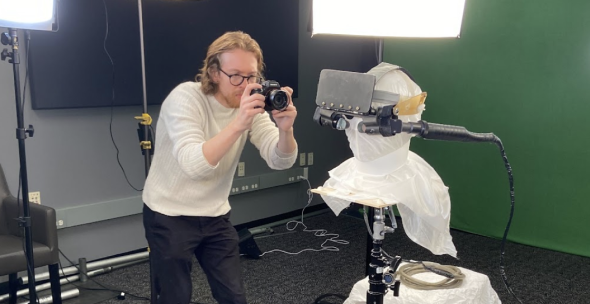
USC Graduate Student Nathan Fairchild photographs Ivan Sutherland’s head-mounted display at CHM.
They’ve recreated Sutherland’s 1968 Harvard Lab, along with his groundbreaking head-mounted display. Two of Sutherland’s students, Bob Sproull and Henry Lewis, provided valuable feedback. Using a VR headset, you’re teleported back in time to the lab with its scattered objects and PDP-1 computer while Sutherland himself describes the project. You see the original head-mounted display, put it on, and begin the simulation of what it would be like inside the prototype headset.
Sutherland gifted the head-mounted display to CHM, making it possible for the team to scan the actual artifact and use Sutherland’s voice from his recent CHM oral history to explain the project. “It was unbelievable to be able to partner with an organization with such incredible recognition and clout as CHM,” says Fisher. “For us that was just huge.”
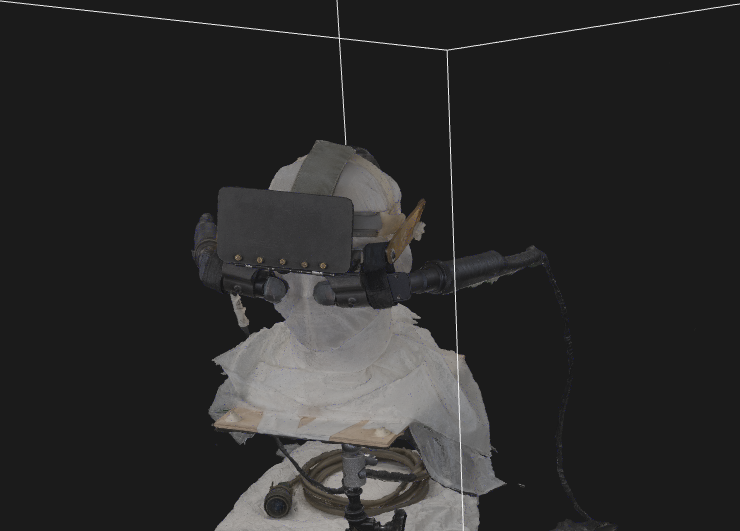
Some early results of the USC virtual reality effort.
This August the USC students and CHM previewed the VR experience in the Immersive Pavilion at SIGGRAPH’s Annual Conference. It was “fantastic,” says Zeynep Abes, a graduate student who works with archiving immersive media. “I don’t think we could have curated a better crowd of people. People would walk by our booth and lose their minds.”
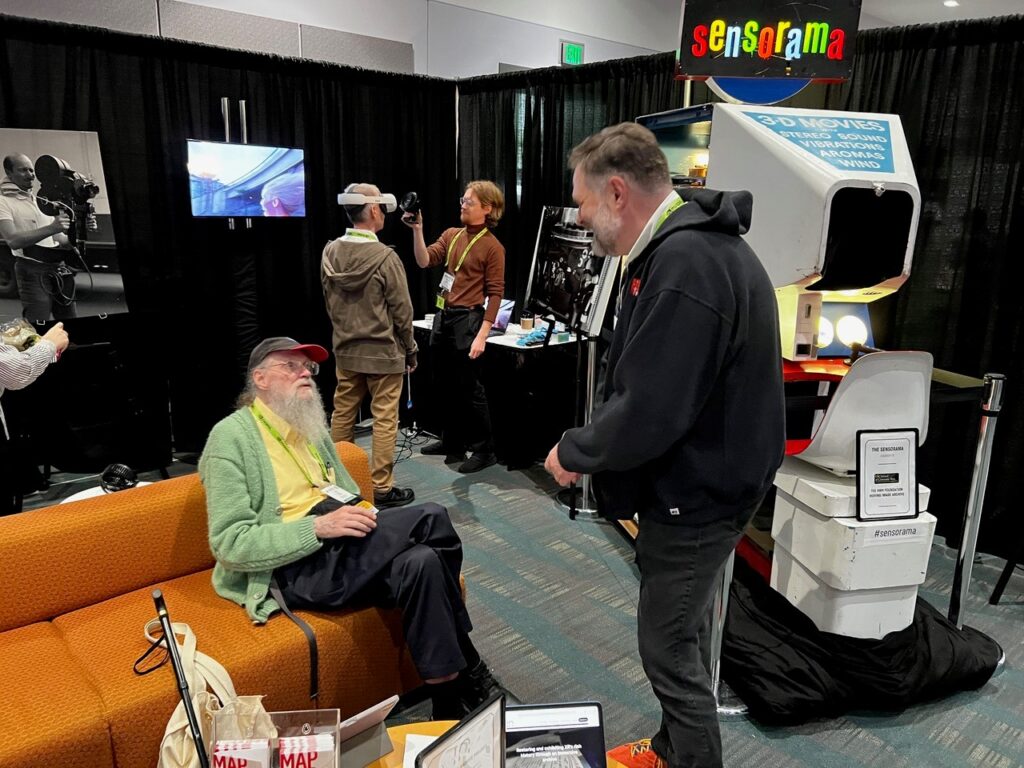
Jim Blinn, computer graphics pioneer (on couch) talks to CHM’s David Brock and Craig Reynolds, artificial life and computer graphics expert, wears the headset in the rear with USC graduate student Nathan Fairchild.
Fisher hopes to make the entire VR experience available on Steam or the META store so people can download the experience the way they’d download an immersive game, and those discussions are in progress. At SIGGRAPH many educators asked for a build to use in class.
Along with Sutherland’s project, Fisher and his team have also recreated the work of Mort Helig’s Sensorama. He hopes USC’s Immersive Archive project can bring other projects to life. Fairchild agrees. “We’ve got a lot more work ahead!” he says. “And we hope that this next chapter is one of expanding the project with wider input and contributions from the Extended Reality (XR) community.”
CHM is standing by to help.
How do you measure the success of a project like this?
Expressing his thoughts about the original project in a later lecture, Sutherland asked, “Was it a success?” He goes on to say that, “Virtual reality is still providing a sort of Holy Grail, the pot of gold at the end of the rainbow; a reason to explore through the Northwest Passage—a reason to go forward and push the technology as hard as you can in some direction. And . . . as you do that pushing on technology, you’ll develop all kinds of things that are interesting and valuable in their own right. . . . And I think in that sense, the head-mounted display was a very successful project.”
Ivan Sutherland and Bob Sproull explain the head-mounted display in a 1996 lecture.
Learn more about the video in the CHM catalog.
Ivan Sutherland has blazed a truly unique trail through computing over the past six decades. He shared stories about his life and career for a recent CHM oral history.
Learn about highlights and milestones in Sutherland’s life in this blog.
Read a transcript of the oral history interview Part 1 or watch the video. Read a transcript of Part 2 or watch the video.
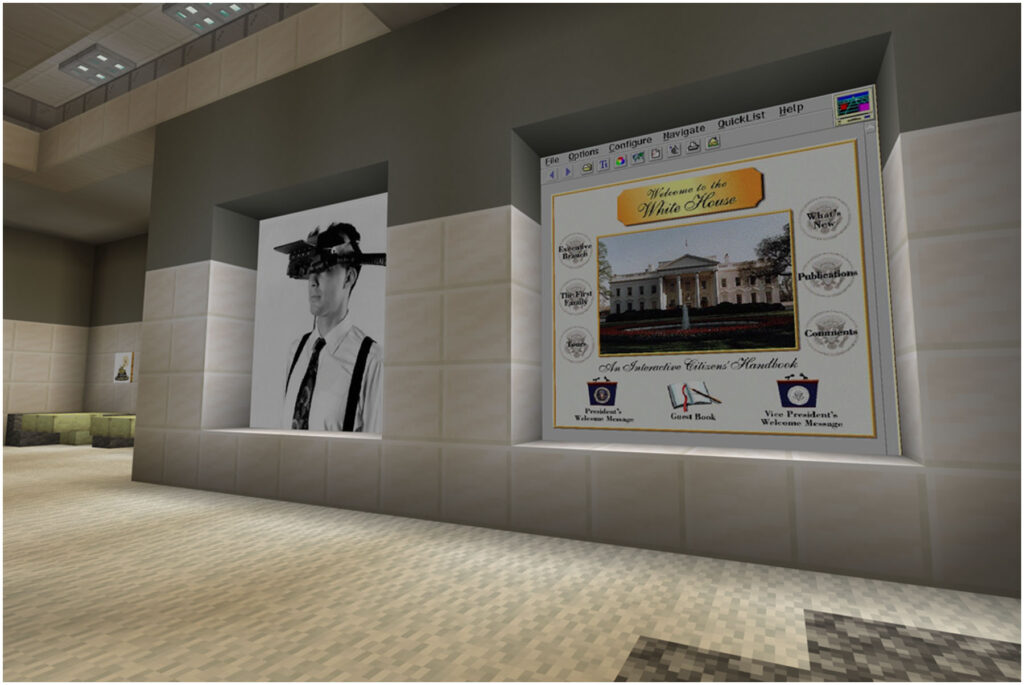
Sutherland’s headmounted display appears in CHM’s Minecraft: Education Edition game, The Great Tech Story. It’s a case of virtual reality history appearing in a digital recreation of the Museum, where students ages 8–18 explore virtual exhibits and engage with key artifacts and innovators.